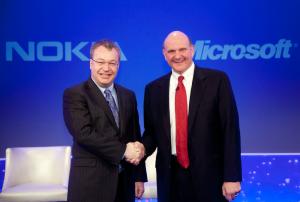Nokia’s Planned Windows Phones Expected to Support NFC

NFC industry sources say they expect new Windows smartphones produced by Nokia to support Near Field Communication, though a Nokia spokesman today declined to comment.
Nokia and Microsoft announced a "broad strategic partnership" today that will see the Finland-based phone maker use the Windows Phone operating system for it smartphones, phasing out Nokia’s open-source Symbian platform.
Nokia remains committed to NFC, and Microsoft has already been working on NFC for inclusion in later versions of Windows Phone, sources told NFC Times. Microsoft had originally planned to come out with NFC support in its Windows Phone platform in 2012, said a source with knowledge of the software giant’s plans. But that might be moved forward. Microsoft, like Nokia, is a sponsor member of the NFC Forum trade group, the highest membership category.
It’s not clear when the first Nokia Windows Phone devices will hit the market, but it’s possible before the end of the year, say observers. A Nokia spokesman told NFC Times that the handset maker, still the world’s largest, would have "nothing new to announce on our NFC plans today."
Meanwhile, Nokia is still expected to make good on its pledge to put NFC in all new Symbian phones it introduces this year. Nokia expects shipment of 150 million more Symbian smartphones, projected over the next two years or so. There have been 200 million sold to date. The first Symbian phone to support NFC, the C7, shipped with an NFC chip inside before the end of 2010. Nokia is expected to ship several NFC-enabled Symbian models this year, but interest in Symbian phones by consumers and app developers is sure to drop.
The tie-up between Nokia and Microsoft, rumored for weeks, is intended to help both companies to take on Apple and Google, especially in the high-stakes smartphone market in the United States, where neither Nokia nor Microsoft have made much of an impact.
With Google having already embraced NFC with its Android mobile phone operating system, Apple expected to adopt the technology for its iPhone 5 and the largest U.S. mobile carriers planning to roll out NFC phones, there is no way the Nokia-Microsoft partnership could ignore the technology, said sources. Research in Motion is also expected to introduce NFC-enabled BlackBerrys this year, with announcements expected soon–perhaps this coming week at the Mobile World Congress in Barcelona. It's possible other models packing NFC, such as phones from Samsung and LG, will be unveiled there.
"You cannot be weak in the U.S. with NFC; you (now) have to be strong," said a source.
The Microsoft connection means even more development work on NFC will be conducted in the United States. Microsoft, which has been working on NFC at its Redmond, Wash., headquarters, according to a source, is also said to favor embedded secure elements for Windows-based NFC phones. It’s unclear, however, if Microsoft plans to introduce any of its own NFC applications or functionality that would require it to store encryption keys on the embedded chips.
Google and Apple, if the latter goes for NFC, are also expected to support embedded chips. The Nexus S, Google’s first NFC smartphone, which it launched in December, carries the PN65 NFC chip from NXP Semiconductors. The chip has an embedded secure element, though also could support applications on SIM cards.
Google is developing a mobile wallet, nicknamed Cream, for its latest Android operating system, which could store NFC-based payment applications from banks and other payment service providers, as NFC Times has reported. But the operating system, dubbed Gingerbread, does not yet support NFC in card-emulation mode, which would be needed for most payment applications.
Google, however, did recently expand the application-programming interface in its Android 2.3.3 version. The expansion adds support for more tag reading, as well as tag writing, and also offers limited support for peer-to-peer communication.












